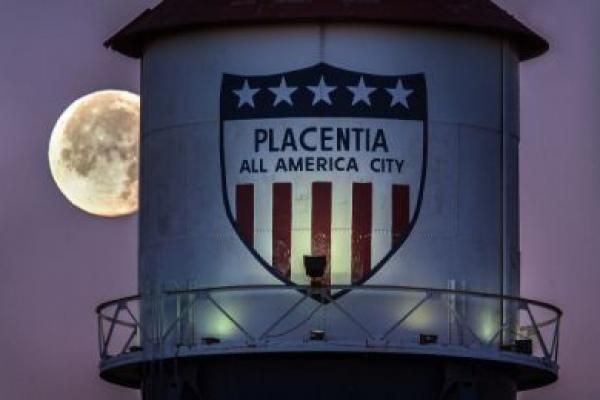America’s Infrastructure Crisis Gets Real
Published on by Katherine Arens, Communications Director TechVision21 in Government
This article is based on Kelly Carnes, President and CEO of TechVision21, presentation at the Water Innovation meeting in Washington, D.C. acknowledging World Water Day 2016.

Water Tower, Placentia, California, Source: Placentia Chamber of Commerce
The U.S. is facing serious infrastructure challenges in declining industrial cities. Although the EPA sets national drinking water standards and provides oversight to ensure those standards are met, the individual states are responsible for ensuring compliance with Lead and Copper Rule, and the Safe Drinking Water Act.
Bureaucracy at its worst was demonstrated most recently in Flint, Michigan where accusations of misapplication of testing standards, ineffective communications, misleading and withheld information, warnings ignored, inaction, foot dragging, and slow paperwork overflowed. In response, a bipartisan bill in Congress is seeking $220 million to fix and replace lead-contaminated pipes in Flint and other cities. Unfortunately it has been stalled by the objections of a few Senators.
Flint should be a national wake-up call. Many other cities are reporting problems with their drinking water. Our nation’s drinking water and wastewater infrastructure has received a grade D. Much of our drinking water infrastructure is nearing the end of its useful life; many pipes and mains are more than 100 years old; 240,000 water main breaks per year.
Recently, 64% of water industry professionals ranked the renewal and replacement of aging water and wastewater infrastructure as the number one critically important water issue we face today– 57% of them ranked financing for capital improvements as the second most critically important issue.
Modernization and financing are critical issues:
- There will be an $84 billion investment gap between needs and funding by 2020.
- This funding gap increases to $144 billion by 2040
Source: Tech Vision 21
Media
Taxonomy
- Public Health
- Water Access
- Integrated Urban Water Management
- Integrated Water Management
- Urban Water
- Urban Water Supply
- Drinking Water
- Infrastructure
- Integrated Infrastructure
- Water & Wastewater
- Pipelines
- Pipes and Pipelines